If “Georgia Tech vs UT Austin” is the question ahead of you, you’ve come to the right place. Two highly reputed universities in the American South, Georgia Tech and UT Austin, are known for their top-notch academic programs, research opportunities, and extracurricular activities. So, how does one choose between the two? Here’s all you need to know.
Overview of Georgia Tech and UT Austin

UT Austin and Georgia Tech provide very different academic and cultural experiences to their students. UT Austin is a public university under the University of Texas system located in Austin, Texas. It ranks 32nd in the country and is known for its large student body, wide range of programs, athletic culture, and laid-back vibe.
Georgia Institute of Technology is a public research university in Atlanta, Georgia. Often considered a public Ivy, it ranks 33rd in the country (US News). In addition to being known for its STEM education, the Georgia Tech campus is also known for its lively campus life and dedication to athletics.
Georgia Institute of Technology
Established in 1885 in the aftermath of the American Civil War, Georgia Institute of Technology or Georgia Tech (GT or GA Tech) represents the transformation of the American South from an agrarian to an industrial economy. In the first 50 years since its inception, Georgia Tech grew from a trade school to a recognised technological institute. Did you know that Georgia Tech is often compared to MIT and is called the MIT of the South?
A public technological university under the University System of Georgia, it is located in Atlanta, the state’s capital city. Besides the main campus is Atlanta, the school also has satellite campuses in Savannah, Georgia, Metz, France, Shenzhen, China, and Singapore.
One of the premier colleges in the United States for engineering and other STEM-related programs, GT ranks 33rd in the country (US News and World Report 2024) and 114th in the world (QS World University Rankings 2025). The institute has also always been ranked among the top ten public universities in the USA.
University of Texas at Austin
The flagship school of the University of Texas system, UT Austin, is a public research university located in Austin, the capital city of Texas. Founded in 1883 with just 8 professors and 221 students, the University is home to over 51,000 students in 18 schools and colleges and a global network of over 500,000 alumni.
Housing seven museums and over 15 libraries, the university is a major centre for academic research, and is one of the largest universities in the United States. Known for a wide range of programs ranging from engineering to business and liberal arts, the university ranks 32nd in the list of National Universities published by US News and World Report and 66th in the world according to QS World University Rankings 2025.
Key Statistics and Rankings
Here is a table comparing the key stats and ranks when it comes to Georgia Tech vs UT Austin
| Georgia Tech | UT Austin | |
| Campus | Atlanta, GA | Austin, TX |
| Nickname | Yellow Jackets | Longhorns |
| Mascot | Wreck, a Ford Model A Sport Coupe | Bevo, a Texas Longhorn steer |
| U.S. News National Rank 2024 | 33 | 32 |
| QS World University Rank 2025 | 114 | 66 |
| Undergraduate Student Body | 19,505 | 42,444 |
| Graduate Student Body | 28,441 | 9,469 |
| % of International Enrollment | ~26.4% | 9.6% |
| Average Acceptance Rate | ~ 13% | ~ 31% |
| Student-to-Faculty Ratio | 22:1 | 18:1 |
| Number of Undergraduate Programs | 39 majors and 71 minors | 170+ programs |
| Number of Graduate Programs | 100+ | 139 |
| Research Expenditure | Over $1 billion | Over $1 billion |
| Number of Athletic Teams | 15 teams competing in NCAA Division I | 21 teams in NCAA Division I |
| Number of Clubs and Student Organizations | 500+ | 1,100+ |
| Colours | Tech Gold, Navy Blue and White | Burnt Orange and White |
GA Tech vs UT Austin: Academic Comparison

Undergraduate Programs
Program Options and Course load: If you look at the number of programmes offered by both schools – Georgia Tech has 39 majors while UT Austin has 170+ – the distinction between an institute of technology and a university becomes clear. GT is significantly smaller, when it comes to the undergraduate student body, and the number of courses offered. Austin, in contrast, is one of the largest universities in the United States.
Even though Georgia Tech has a reputation for business and economics programs, the university’s key focus is technological education. Computer Science, Mechanical Engineering, Industrial engineering, Biomedical sciences, Cybersecurity, and Aerospace programs are some of the top choices available at this Atlanta university.
In contrast, UT Austin excels in natural sciences, liberal arts, social sciences, psychology, business, and management programs in addition to its strong STEM programs. It is one of the biggest universities in the USA for undergraduate study in terms of campus size, student population, and the number of options available.
Another significant aspect of both their undergraduate schools is the co-op program. Both schools offer co-op options so that their graduates are ready to meet the demands of the industry. While co-op options are available across departments and schools at UT Austin, GT engineering school especially offers a five-year undergraduate co-op program, designed so that a student can complement academics with paid practical work experience.
Ranking and Reputation: Although university ranking should not be the only factor when it comes to choosing universities, both UT Austin and Georgia Tech are fairly evenly placed in national rankings. UT Austin ranks 32nd, while Georgia Tech is right behind at the 33rd spot in metrics published by US News and World Report for the year 2024.
However, according to QS World University Rankings 2025, UT Austin is ranked 66th globally, while GT is 114th. Based on the metrics published by Times Higher Education, Georgia Tech is ahead, at the 36th spot globally, while Austin ranks 52nd globally. Different organisations have varied parameters for their rankings, which would explain the significant differences in positions.
At the end of the day, both are highly reputed universities that are committed to providing top-notch facilities and a well-rounded education for their students. Georgia Tech is known for its academic and tech vibe, while UT Austin is more diverse and laid-back, providing a lot more options for its students.
Standardised Test Scores: Unlike most American colleges, which have continued with their test-optional policies since the pandemic, both GT and UT Austin will require applicants to submit SAT/ ACT/ IB/ AP scores when applying for their undergraduate programs. UT Austin recently announced that the Spring 2025 admission cycle will be the last one that is test-optional. Students applying from Fall 2025 and beyond must submit standardized test scores. Georgia Tech has already made tests mandatory for its applicants.
The average SAT score of those who got into University of Texas at Austin is around 1480. Georgia Tech, on the other hand, considers a SAT range of 1370 to 1550 as competitive. With ACT, the scores are typically between 31 and 35.
The minimum GPA to get into the GT School of Engineering is 3.3 on a 4 scale. For most courses, applicants are also required to display mastery in mathematics, including calculus, science, and English. At the University of Texas, the minimum GPA ranges between 3.0 and 3.4 on a 4.0 scale, depending on the program.
Core Curriculum: The General Education requirement at GT is designed to enable students to develop a well-rounded focus in addition to the rigorous technical and applied education. All undergraduate students, during their 4-year study, are required to demonstrate a level of proficiency in the following areas –
- Communication
- Quantitative (including differential and integral calculus)
- Institutional Options (typically in areas of computing, algorithmic complexity and so on)
- Humanities, Fine Arts and Ethics
- Natural Sciences, Math, and Technology
- Social Sciences
- Constitution and History
- Wellness
- 18 hours of lower division requirements in each major
At the University of Texas, all students pursuing an undergraduate degree are required to complete a 42-hour core curriculum that is mandated statewide. It includes courses in composition, humanities, American and Texas Government, United States History, social and behavioral sciences, mathematics, natural science and technology, and visual and performing arts.
Class Size: At the undergraduate level, UT Austin has a much bigger student body when compared to Georgia Tech. GT has about 19,505 undergrads while UT has over 42,400 students working towards their bachelor’s degree.
Despite their large numbers, UT Austin has a lower student-to-faculty ratio of 18:1 compared to GA Tech’s 22:1. The difference in the number of classes with fewer than 20 students is marginal, with about 33% of classes having fewer than 20 students at Georgia Tech, and 36.5% in UT Austin.
These numbers can work both as an advantage or a disadvantage depending on personal preferences. Some students thrive in smaller campuses with more individualized attention while some prefer the independence and diversity of a large student population.
Top Majors:
| Georgia Tech | UT Austin |
|
|
Graduate Programs
Graduate Program Options: Like its undergraduate programs, UT Austin has more options to choose from when it comes to graduate studies. UT has 139 master’s programs (over 230 if you are counting master’s and doctoral programs), while GT offers about 100+ options.
However, if you look at the student body, Georgia Tech has over three times the number of grad students as UT. GT has about 28,441 grads, while UT Austin has only about 9,469. This shows that UT has a better reputation and infrastructure for undergraduate study, while GT is more sought after for graduate-level courses.
That said, UT Austin ranks number 1 in the world when it comes to petroleum engineering, and is national number 1 in accounting. The school is also in the top ten list for Business Analytics, Information Systems, Project Management, Real Estate, Educational Psychology, Civil Engineering, AI, Geology, and Applied Mathematics (Source: U.S. News).
GT also offers a few master’s and doctoral degree options beyond STEM. Its Scheller College of Business has a solid MBA program, but its primary focus remains on engineering and other technology-related programs.
College Admissions: While Georgia Tech admissions are competitive (the school has an acceptance rate of about 13 – 15%), UT Austin’s rate is at about 31%.
The minimum admission criteria in both universities include a valid baccalaureate degree from a recognised university (GPA varies with departments), a strong application form with a well-written Statement of Purpose (SOP), relevant work experience (for some courses), letters of recommendation (LORs) and English proficiency test scores (for international students). When it comes to standardized tests, GRE scores will be considered if submitted but are not necessary in both schools unless specifically required for a particular course.
Top Graduate Programs:
| Georgia Tech | UT Austin |
|
|
Overall and Subject Ranking
| Georgia Institute of Technology | University of Texas at Austin |
| Overall Rank US News 2024: 33 | Overall Rank US News 2024: 32 |
| Times Higher Education WUR: 36 | Times Higher Education WUR: 52 |
| QS WUR 2025: 114 | QS WUR 2025: 66 |
| Subject and Other Ranking (Source: QS Global Subject Rankings 2024) | |
|
|
From the table, it becomes clear that while Georgia Tech and UT Austin are fairly evenly matched, with the key difference being UT Austin is also highly renowned for non-STEM programs. Beyond that, one cannot really go wrong when choosing between UT Austin and Georgia Tech. They offer different advantages and academic environments to their students. When choosing, the focus should be on the specific departments, their curricula, teaching styles and pedagogies, and what best aligns with your career goals.
Constituent Schools
Georgia Institute of Technology is composed of 6 main colleges which are then divided into 29 schools. The six colleges are –
- College of Engineering
- College of Computing
- College of Sciences
- College of Design
- Ivan Allen College of Liberal Arts
- Scheller College of Business
UT Austin’s undergraduate and graduate programs are offered by the following schools
- School of Architecture
- Red McCombs School of Business
- Moody College of Communication
- College of Education
- Cockrell School of Engineering
- College of Fine Arts
- John A. and Katherine G. Jackson School of Geosciences
- Graduate School
- School of Information
- School of Law
- College of Liberal Arts
- Dell Medical School
- College of Natural Sciences
- School of Nursing
- College of Pharmacy
- Lyndon B. Johnson School of Public Affairs
- Steve Hicks School of Social Work
- Undergraduate College
Research Opportunities
Both Georgia Tech and UT Austin are premier R1 research universities that encourage their students to push the boundaries of their disciplines. Both spend over $1 billion on research every year. As state universities, both UT Austin and Georgia Tech are primarily funded by federal, state and local agencies, which are then supplemented by private foundations.
In addition to the main Georgia Tech Research Institute (GTRI), the university is also home to the Enterprise Innovation Institute and 10 interdisciplinary research centres. GTRI’s core research areas include complex and agile systems engineering, sensor design and integration, information management and cybersecurity, and defence technology development. The university also consistently ranks among the top US Universities based on the volume of research conducted.
Similarly, UT Austin is also one of the leading research universities in the United States, ranking 7th among US Universities financed by the National Science Foundation. With about 1,300 national and international patents in the last ten years, UT Austin has a number of research opportunities for its students. Discoveries from the Longhorn research centres include the lithium-ion battery, 3-D printing, and expansion of gene editing tools, and the closest potentially habitable planet, Proxima b. In addition to over 200 dedicated research centres and units, the university also enables the Freshman Research Initiative (FRI) and the Office of Undergraduate Research (OUR), securing its position as the nation’s largest undergraduate research program.
To sum up, both universities foster robust research environments with creative liberty in search of new knowledge. They help students develop a research mindset from the undergraduate level, helping their alumni become leaders and catalysts of change in the world.
Key Dates for Application
In this section, we will be looking at the key dates for application and admission into undergraduate programs (Fall semester) to get a sense of the timeline. Graduate schools have a different timeline. It is also recommended that you verify with the specific department / school that you are applying to, just to ensure they do not follow a different cycle.
| Important Dates | Georgia Institute | UT Austin |
| Early Action (EA) Deadline | EA 1 – October 15 EA 2 – November 1 |
October 15 |
| Regular Admissions Deadline | January 6 | December 1 |
| EA Decision Posted in | January | Mid-January |
| Financial Aid Application Deadline | EA deadlines | January 15 |
| Regular Decision Posted in | March | Mid February |
| Deadline to accept offer of Regular admission | May 1 | May 1 |
| Average Acceptance Rate | ~ 13% | ~ 31% |
Admission Options to be considered in the Georgia Tech – UT Austin debate:
- Both schools do not have an Early Decision (ED) admission pathway.
- The Early Action pathway in both schools is non-restrictive and non-binding.
- Georgia Tech’s EA is split into two. EA 1 is exclusively for Georgia students, while EA 2 is only for non-Georgian students.
- Students who do not complete the GT application by the EA deadline can be considered for Regular admission.
- Both Georgia Tech and UT Austin accept Common Application.
- The application fee is $95 for domestic students and $105 for international students at GT. At UT Austin, it is $75 and $90 respectively.
Academic Calendar
Both schools follow a semester system when it comes to their academic calendar. A year is divided into the Fall Semester (August/ September – December) and the Spring Semester (January – April/ May). Both schools also have an accelerated/ shorter summer term during which some academic activities take place.
UT Austin vs Georgia Tech: Campus Life and Environment

From their location to the campus culture, UT Austin and Georgia Institute of Technology offer varied experiences to their students. Let us take a look at some of the other factors that can make a prospective student prefer one or the other in the debate of UT Austin vs GA Tech.
Location
One of the key factors that separates the two titans of higher education is their location. As the name suggests, UT Austin is located in Austin, the capital city of Texas known for its tech industry, music and arts scene, and vibrant culture. The city is also known for its long, hot summers and short, mild winters, with warm spring and fall transitional periods. Main areas of economics include business and financial services, defense and security, information technology, telecommunications, and manufacturing.
Located in the American South, Georgia Institute of Technology typically experiences a subtropical climate with hot summers and mild winters. The school is located in urban Atlanta, a city known for its financial and industrial sectors. The city also has the third largest concentration of Fortune 500 companies in the country. A welcome mix of southern hospitality and modern day diversity, Atlanta also offers varied cultural and recreational opportunities for its people.
If you are comparing costs of living, Atlanta Georgia is marginally cheaper when compared to Austin Texas.
Campus Size and Facilities
When compared to the Ivy Leagues, both Georgia Tech and UT Austin have smaller campuses, with GT extending about 450 acres and UT Austin about 431 acres. However, their student body is much bigger, Georgia Tech has about 19,505 undergrads and 28,441 grad students while UT Austin has about 42,444 undergrads and 9,469 grad students.
One of the top green colleges, according to the Princeton Review, GT campus is known for its wooded areas and lush lawns. The campus also provides state-of-the-art facilities for its students, ranging from top-notch libraries, study areas, a competition pool, a diving well, martial arts studios, and an indoor climbing wall. The Campus Recreation Center (CRC) houses all campus recreation facilities and programs, including Women in the Wilderness, the Annual Georgia Tech Ski Trip, the Climbing Wall Competition, the Poker series and many more.
The Austin campus is composed of dozens of museums, libraries, centres, institutes and special venues spread across the campus and the city, each with its own unique exhibits and programming. It is also home to the Darrell K Royal-Texas Memorial Stadium, one of the largest stadiums in the nation. The campus also includes a recreational sports centre, an aquatic gym complex, student activities, and the famous UT Tower.
Student Activities and Organizations
When it comes to extracurricular activities, both universities have a culture of enabling students to explore other interests beyond academics.
Athletics:
Both UT Austin and Georgia Tech have a culture of athletics and a longstanding tradition of competitive sports. GT has 15 teams that compete at NCAA Division I, while UT Austin has 21. In addition, they also have a culture of club sports and athletics for recreation.
Austin is known for its football and baseball teams and its commitment to enabling and supporting women’s athletics. GA Tech’s position as a technological institute is also noticeable in its athletic department, as the students also compete in competitive drone racing!
Student clubs and organizations:
Looking beyond athletics, UT Austin enables over 1,100 clubs and student organizations for their students to pursue varied interests beyond academics. Georgia Tech houses more than 500 student clubs and organisations, not including a student media house and numerous events that take place throughout the year. The GA campus also accommodates 56 chapters of fraternity and sorority life with 25% of undergraduates involved in them.
Housing and Accommodation
In both Georgia Tech and UT Austin, it is not mandatory to live on campus, even if you are a freshman or a sophomore. However, only about 50% of freshmen live on campus at Austin, while about 97% of first-years choose to live on campus at GT.
Georgia Tech has over 20 different housing options for undergraduates alone. Options include traditional dorms, suites, and apartment style rooms that are shared among students. Overall, about 44% of students choose to live on campus at GT while the number is around 18% for UT Austin.
Both schools also have dedicated housing options for their graduate students, ranging from residence halls to family apartments. The housing office of both schools also assists students with the requirements of off-campus accommodation.
Georgia Tech vs UT Austin: Financial Aspects

If costs are an important consideration in your decision making process, then there is a clear advantage in choosing Georgia Institute of Technology vs University of Texas at Austin, if you are a resident of the respective states.
Public universities are more affordable when compared to private universities like CalTech, Stanford, MIT, or Northwestern. As a resident of Georgia or Texas, you can also be eligible to the university’s subsidised rates. Even for an out-of-state or international student, tuition is comparatively cheaper.
That said, both schools also have highly inclusive financial aid programs. Here is a table that provides a general picture of the cost of studying in each of these universities.
| Annual Rates | GT | UT Austin |
| Tuition (Bachelor’s) | In state – $10,512 Out of State – $32,938 International – $33,566 |
In state – $11,600 to $12,500 Out of State/ International – $35,000 – $50,000 |
| Tuition (Master’s, not including professional programs) | In state: $16,500 – $30,000 International: $36,000 – $45,000 |
In state – $12,000 to $18,000 Out of State/ International – $24,000 – $35,000 |
| MBA Tuition | In state – $30,246 International – $43,604 |
In state – $55,000 International – $65,000 |
| Housing (On-Campus) | $7,654 | $13,504 to $20,447 (including meal plans) |
| Food (Meal Plan) | $5,954 | |
| Off-Campus Housing | $10,000 – $25,000 | $7,000 – $25,000 |
| Types of Financial Aid | 1. Scholarships and Grants 2. Loans 3. Work Study 4. Federal Aid (Both merit and need-based options are available) |
1. Grants 2. Scholarships 3. Loans 4. TAs and Fellowships 5. Work Study (Both merit and need-based options are available) |
| International student scholarships | Not eligible for
|
Can apply for
|
| Estimated average grant for an aid student | $14,927 | $15,223 |
| Admission Decisions | Need blind only for in-state students | Need aware |
| Demonstrated Need Cover | About 50% | 100% (Families with income less than $65,000 have 0% parent contribution) |
Here are a few important points to be kept in mind.
- The tuition fees are average figures, calculated for a typical academic year of 9 months. The fee will be higher should you choose to take extra courses in the summer months.
- The tuition fee amounts in the table are indicative of only the cost of attendance. It does not include books, student health insurance and other expenses. Student insurance alone can cost between $3,000 – $7,000 a year.
- Both have numerous scholarship and financial aid options that are both merit and need based. It is important to research specific scholarship options for the program/ department that you are applying for.
Career Prospects and Alumni Network

Considering the reputation of the two universities and their extensive alumni networks, there is no doubt that a graduate of these schools will have numerous opportunities of their choosing after graduation. The academic rigour and culture of research in these two universities create a pedigree that recruiters often compete to get for their organisations.
Employment Rates
GT has an employment rate of about 89 – 90% of its graduates receiving employment offers within six months of graduation. About 75% of UT Austin alumni are employed full-time, while national comparison graduates are about 70%. If you are looking at the McCombs School of Business, about 90% of UT Austin graduates of the MBA program had job offers within three months of graduation with an average base salary of $157,735.
Notable Alumni
UT Austin has over 110,000 living alums across the globe while Georgia Tech’s alumni network extends across a community of 170,000 people who are some of the brightest minds in science, technology and business.
If you compare Nobel Laureates as a mark of academic excellence, UT Austin is associated with 7 Nobel Prize Winners, while former president Jimmy Carter and Chemist Kary Mullis are from Georgia Tech.
Notable Alumni of UT Austin
- Alan Bean, Astronaut
- Tom Landry, Legendary Head Coach of the Dallas Cowboys
- Matthew McConaughey, Academy Award-Winning Actor
- Liz Carpenter, Writer and Political Humorist
- Bud Frazier, Pioneering Heart Surgeon
- Lady Bird Johnson, Former First Lady of the United States
Other Notable Alumni from Georgia Tech
- John Young, Astronaut
- Jeff Foxworthy, Comedian and actor
- Dennis Hayes, Founder of Hayes Communications
- Robert Milton, Former CEO of Air Canada
- Wallace Coulter, Engineer
- Krishna Bharat, Research Scientist, Creator of Google News
Career Services
From internships to employment opportunities, organisations and recruiters seek students and graduates of top notch institutions like UT Austin and GeorgiaTech. In both universities, the career centres for strategy and success assist their students in gaining practical experience, building networks and communicating their aptitudes and skill sets to prospective employers. They also play an instrumental role in building leadership skills and specialised skills that are essential to a workplace.
In both universities, the career centre connects students to internship opportunities and prospective employers through seminars, job fairs, and numerous other on-campus events. Their goal is to clarify career aspirations, identify opportunities, and offer support at every stage of career development.
Conclusion

Deciding UT Austin vs Georgia Tech involves considering various factors such as academic strengths, campus life, financial implications, and career prospects. Both universities offer unparalleled opportunities, but your decision should align with your personal and professional goals.
From being located about 900 miles from each other, they have more differences than similarities. The prime difference that sets the two schools apart is that Georgia Tech, as the name suggests, is an institute of technology with primary focus on STEM education while UT Austin is a full-fledged university. They both provide numerous financial aid and housing options for their students.
The following list highlights the key differences and similarities.
- Within the United States, UT Austin ranks 32nd while Georgia Tech ranks 33rd according to US News.
- Despite a few popular programs in social sciences and business, GT is primarily known for its programs in engineering and technology. In contrast, UT is known for a wide variety of disciplines including STEM, liberal arts, social sciences, communication, visual arts and others. That said, engineering is one of the most popular programs in both schools.
- They are both public universities and offer subsited tuition rates to the residents of their respective states.
- While their campus sizes are comparable, UT Austin is one of the largest colleges in the country for undergraduate study. Its student population is nearly thrice that of Georgia Tech’s. However, GT has a significantly higher grad student population when compared to its Texan competitor.
- Despite the larger student population, UT Austin has a marginally lower student to faculty ratio at about 18:1 while GT’s ratio is 22:1.
- When it comes to course options, UT Austin has a lot more courses and programs to choose from, beyond engineering and tech, allowing students to explore more diverse interests.
- Georgia Tech students prefer their on-campus housing more than UT Austin students.
- GA Tech is generally more competitive (acceptance rate of about 13%) and is known for its rigorous curriculum. UT Austin has an acceptance rate of about 31% and is famous for its laid back vibe.
- GT’s location in Atlanta is also an added advantage as the city is known for its internship and employment opportunities. Austin has a thriving tech and cultural scene and has varied internship options.
Considering their reputation, the ultimate call rests on whether the course curriculum and the learning outcomes meet your career plans. The most significant part of your research is to compare courses, syllabi, electives, faculty and research facilities of your preferred degree program, speak to current students, and then decide depending on which school better suits your needs.
We understand that becoming an international student can be very thrilling, but the prep and paperwork of it all can get overwhelming. The easiest way to reduce your stress is to sign up with TC Global.
We simplify international education, learning, and mobility through connecting students, universities, and a global community on a single platform where there are over 1000+ education providers and over 80,000+ courses.
Our platform enables students to study anywhere in the world in just a few steps. From search and discovery and finding the right course fit for you, to applications, visas and departure – we see you through it all.
To move forward with us, download our app or visit tcglobal.com and sign in to create an account on our student platform and onboard with us in quick, easy steps.! 🚀
Then simply set up a visit Calendly.com/tcglobal to pick a Relationships Team closest to you and choose a slot to meet with a Relationship Member. Be it Georgia Tech vs UT Austin or any such debates, our experts will be with you every step of the way to help you decide.
Let’s shape your future together.
FAQs

Is Georgia Tech a Tier 1 college?
While there is no official classification of colleges into tiers, universities in the US can be classified, based on their reputation and their selectiveness of admissions. Keeping that in mind, the Ivy League, Stanford, Caltech, MIT, and Johns Hopkins can be considered as Tier 1 while Georgia Tech, NYU, UCLA, UC Berkeley, Tufts, USC and many others are considered Tier 2. Having said that, these are top-ranked universities and are extremely competitive as well. This is just a loose, informal classification and should not be seen as inferior in any way.
Is UT Austin or Georgia Tech better?
They are evenly placed when it comes to national rankings and have different areas of strengths when it comes to academics. GT is more selective than UT and also has a marginally higher median graduate salary when compared to its Texan competitor. Ultimately, the answer depends on your personal preferences when it comes to courses, location, reputation, financial concerns and campus culture.
Is UT Austin hard to get into?
UT Austin has an average acceptance rate of about 31% is still selective but higher than Georgia Tech’s 13%.
Is Georgia Tech a prestigious university?
Yes, known particularly for its engineering programs, Georgia Tech ranks 33rd in the country.
How many international students go to UT Austin?
Despite the university’s large student population, about 10% of its students are from out of state, while about 9.6% are international.
Is UT Austin a top CS school?
The computer science program at UT Austin, especially at the graduate level, is considered one of the top 10 in the country. The university also ranks 30th in the world for Computer Science according to QS Subject Rankings 2024.
You May Also Like
UC Davis or UC Irvine – What’s Better?
UIUC or Georgia Tech – What’s Better in 2025?
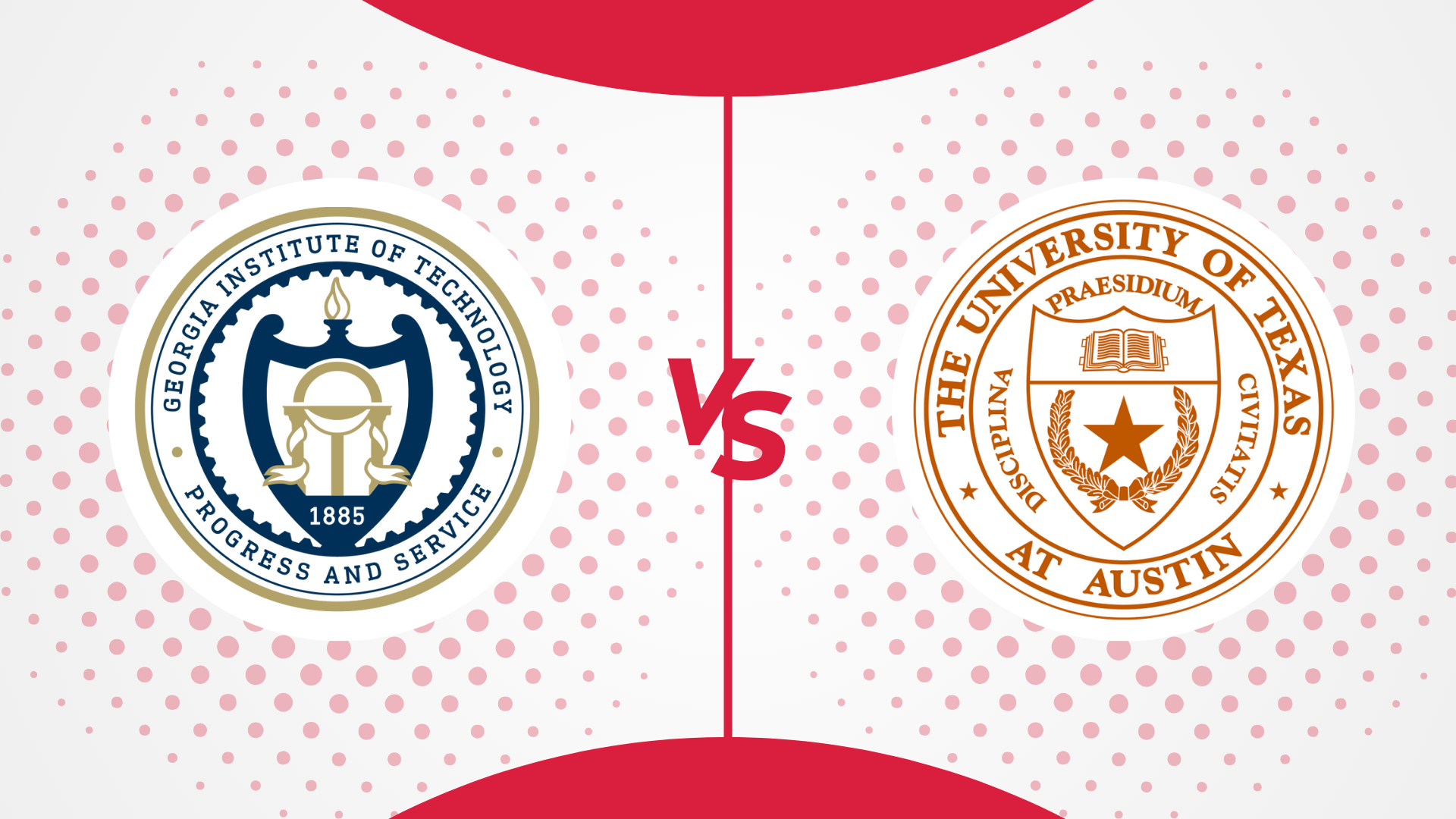
Compare more universities in USA
-

Purdue vs UIUC: How Do They Compare in 2025?
December 16, 2024 -

Tufts vs BU: How Do They Compare in 2025?
December 16, 2024 -

UIUC vs Georgia Tech: How Do They Compare in 2025?
December 3, 2024 -

UC Davis vs UC Irvine: How Do They Compare in 2024
September 10, 2024 -
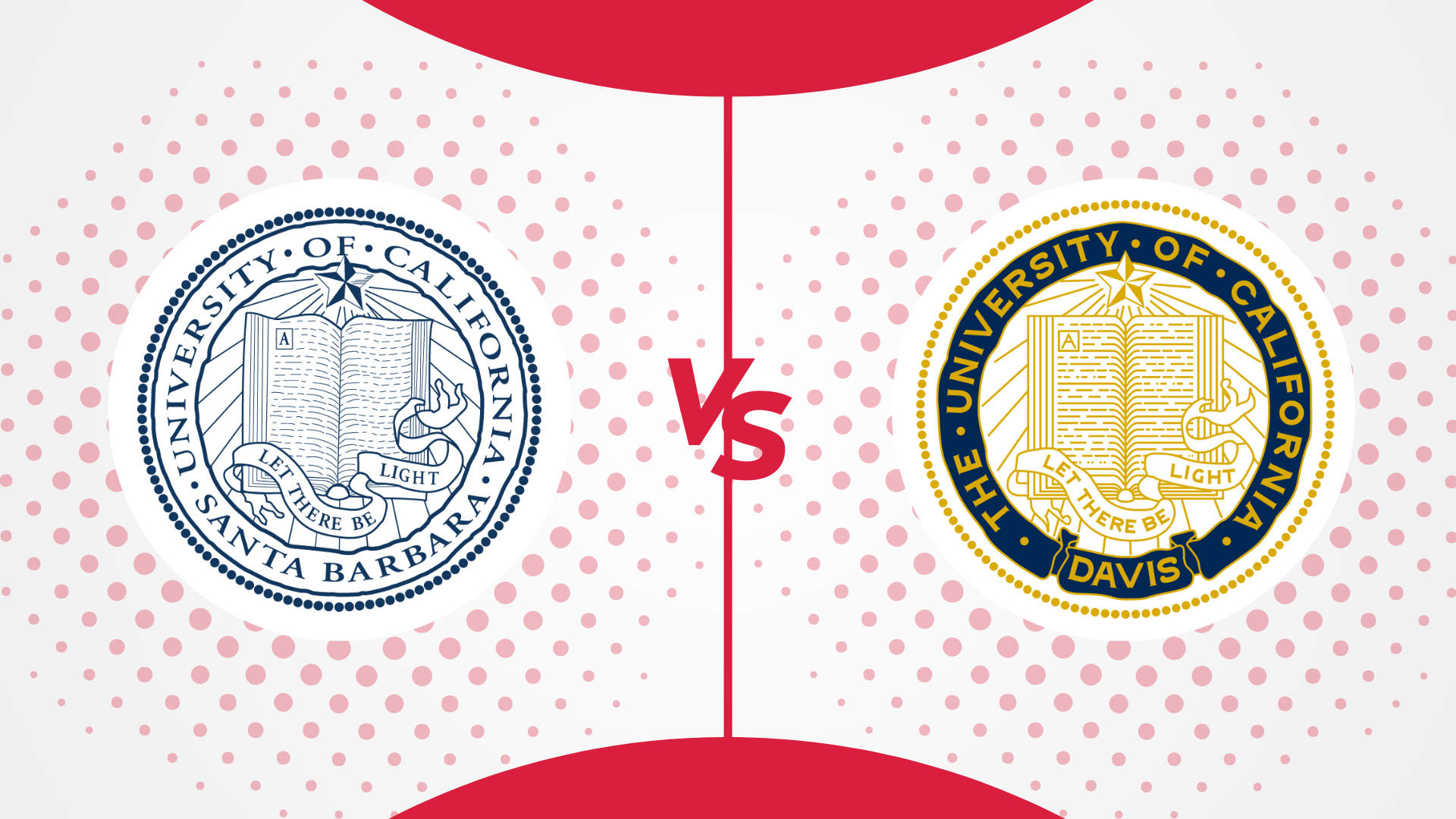
UC Santa Barbara vs UC Davis: How Do They Compare? [2024]
August 30, 2024 -
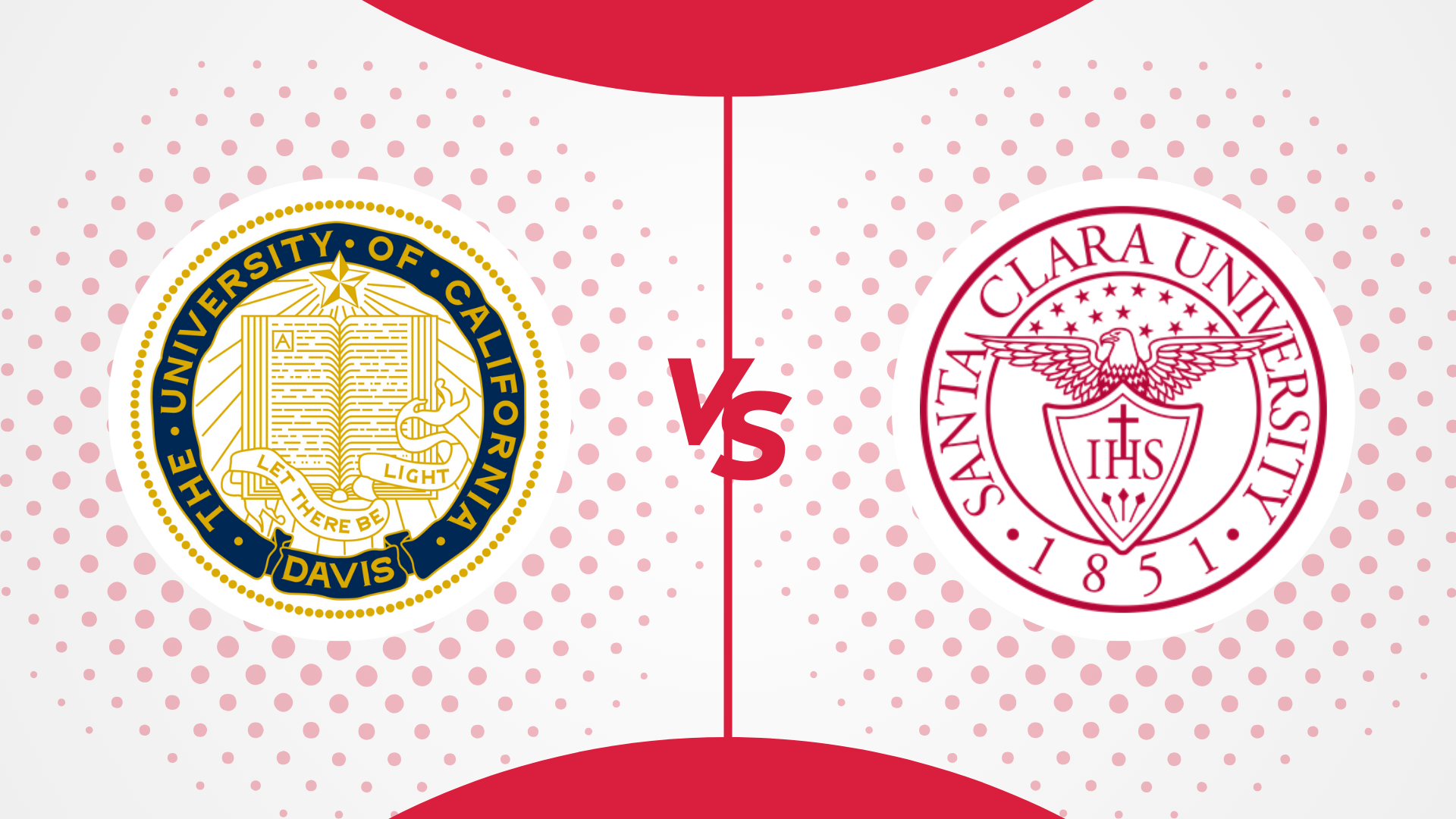
UC Davis vs Santa Clara University: How Do They Compare? [2024]
August 23, 2024 -

University of Chicago vs Northwestern University: How Do They Compare
August 20, 2024 -

Georgia Tech vs MIT: How Do They Compare? [2024]
August 7, 2024 -

Caltech vs MIT: How Do They Compare [2024]
August 2, 2024 -

MIT vs Harvard: How Do They Compare [2024]
July 27, 2024 -

Cornell vs Harvard: How Do They Compare? [2024]
July 27, 2024 -

Yale vs Harvard: How Do They Compare [2024]
July 22, 2024 -

Harvard vs Princeton: How Do They Compare [2024]
July 16, 2024 -
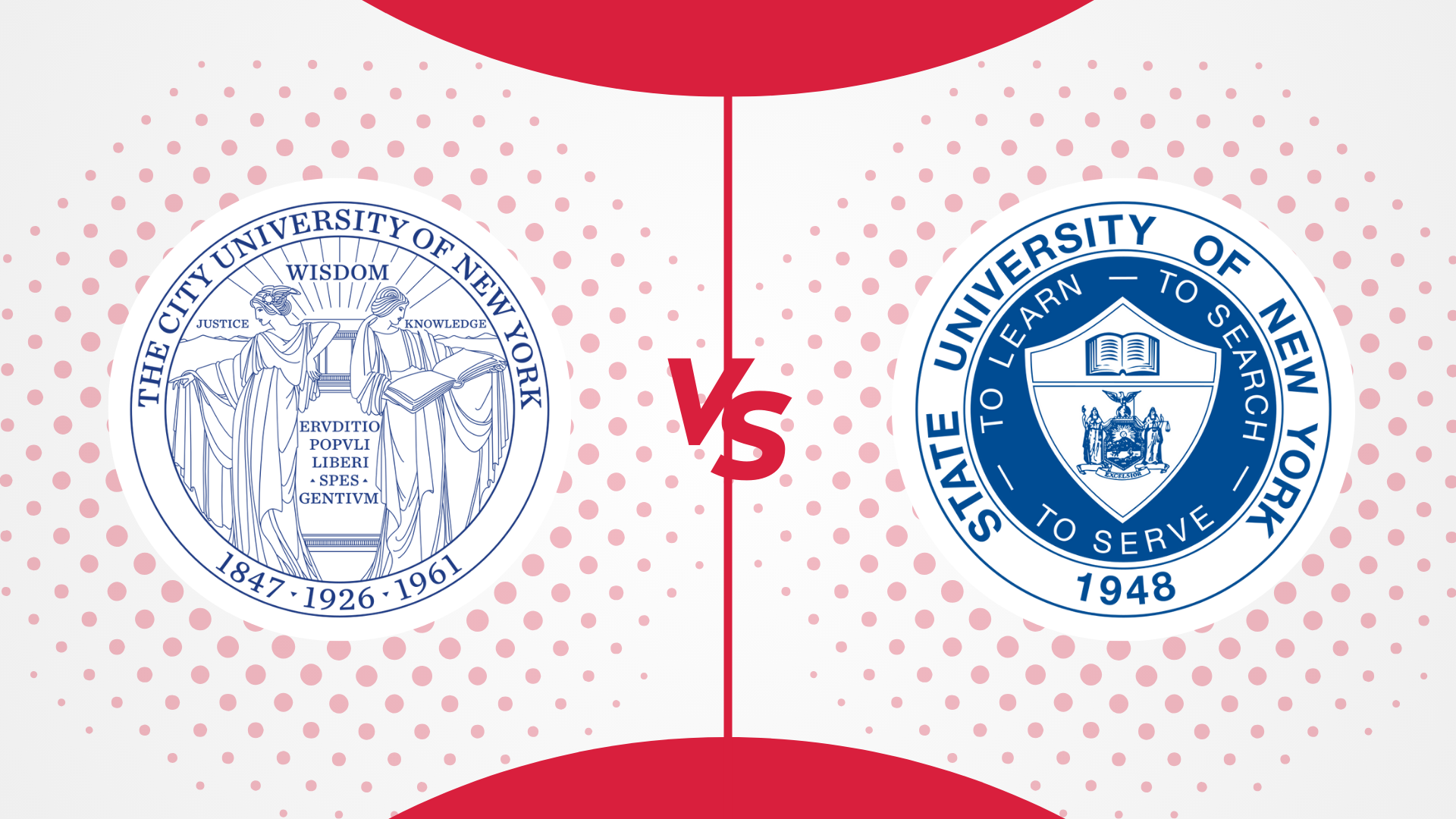
CUNY vs SUNY: Which One is For You in 2024
July 9, 2024 -

UCSD VS UCSB: Which One is Better For You in 2024
July 9, 2024 -

USD vs UCSD: Which one should you choose in 2024?
July 9, 2024 -
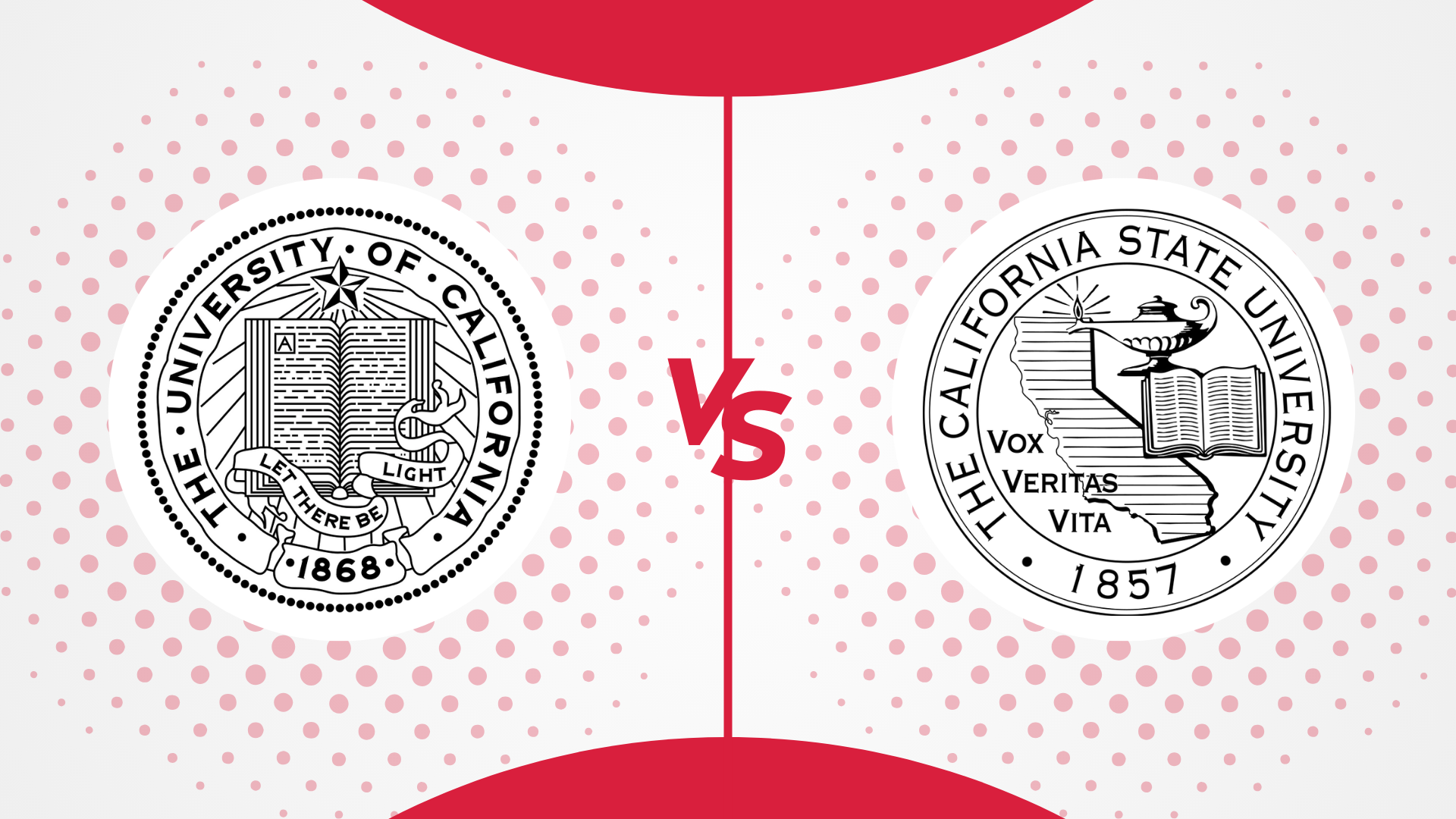
UC vs CSU: Which One is Better in 2024?
July 9, 2024 -
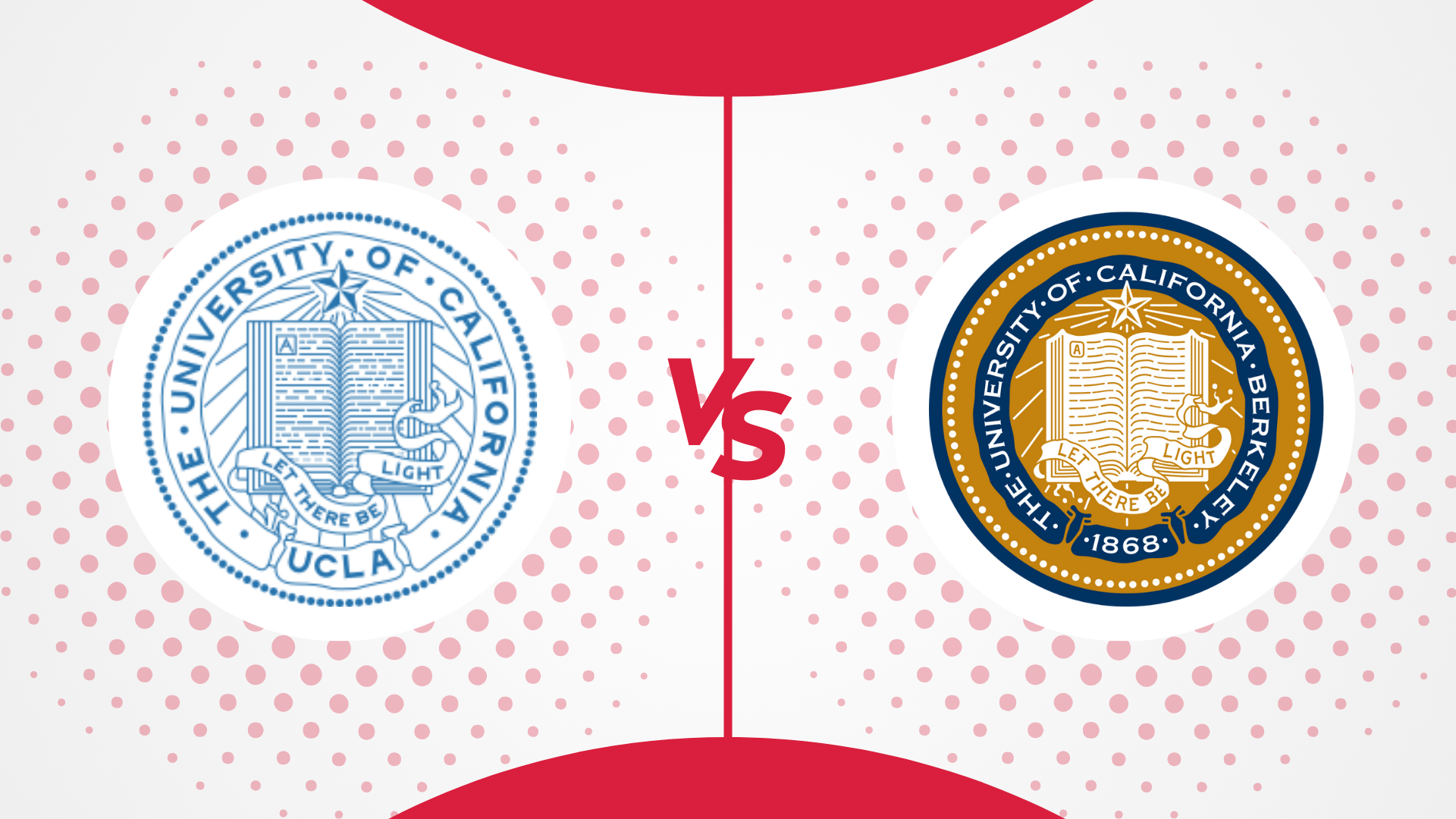
UCLA vs UC Berkeley: Which One is Best in 2024
July 9, 2024 -

University of Arizona vs Arizona State University: Which One is Better in 2024
July 9, 2024 -

Penn State vs UPenn: Which is Better for International Students in 2024
July 9, 2024 -

Northeastern vs Northwestern: Which One is Best in 2024
July 9, 2024 -

Northeastern University vs Purdue University – Which One is Better in 2024?
July 9, 2024 -

Boston College vs Boston University: Which One is the Best in 2024?
July 9, 2024 -

LSU vs UCLA: Which Is Better For You In 2024?
July 8, 2024 -

NYU vs Boston University: Which One Is Better For You In 2024
July 8, 2024 -

USC vs UCLA: Which One Is Better For You In 2024?
July 5, 2024 -
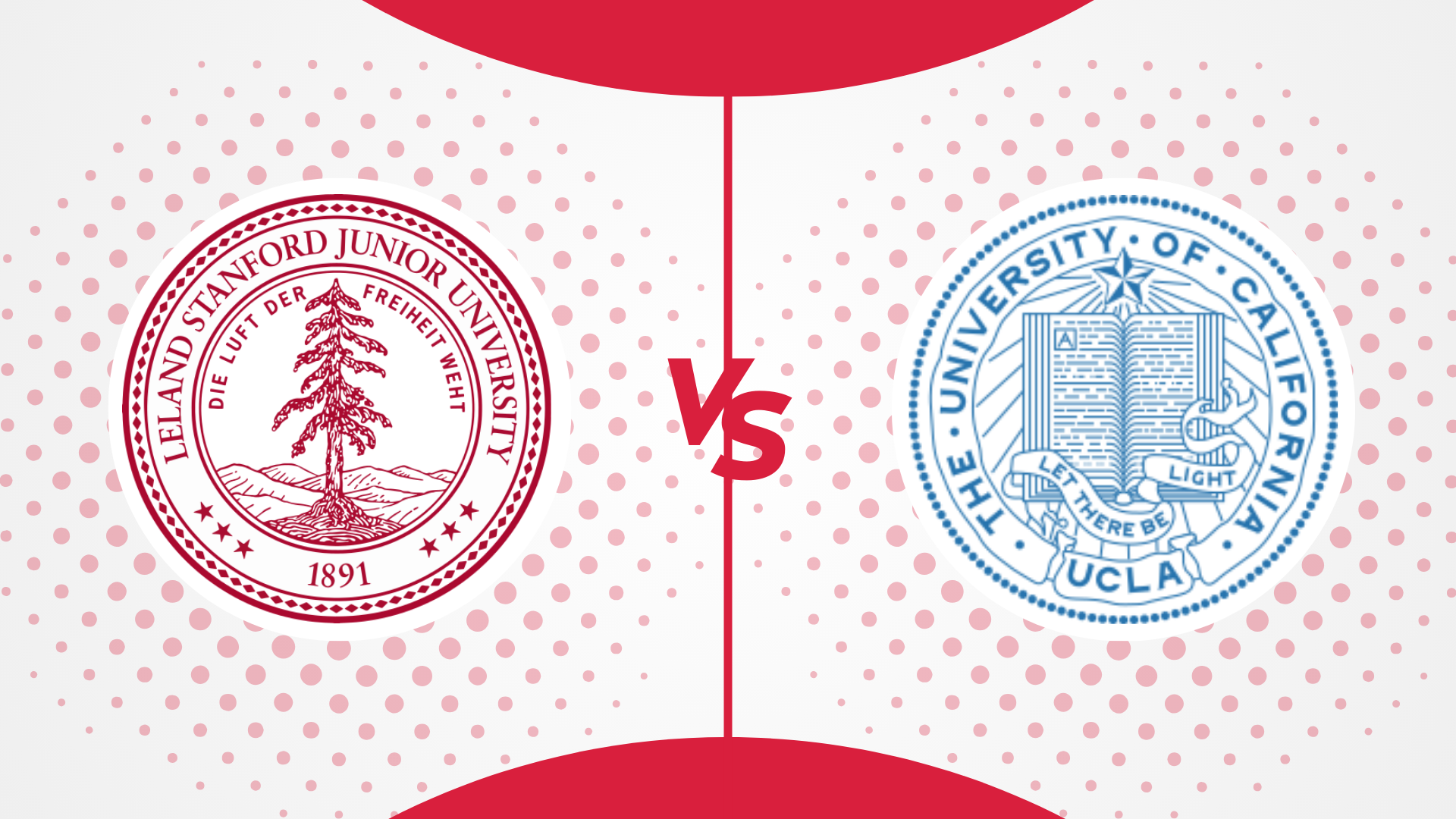
Stanford vs UCLA: Which One is Better For You in 2024
June 28, 2024 -

USC vs Stanford: Which One is Better For You in 2024
June 28, 2024 -
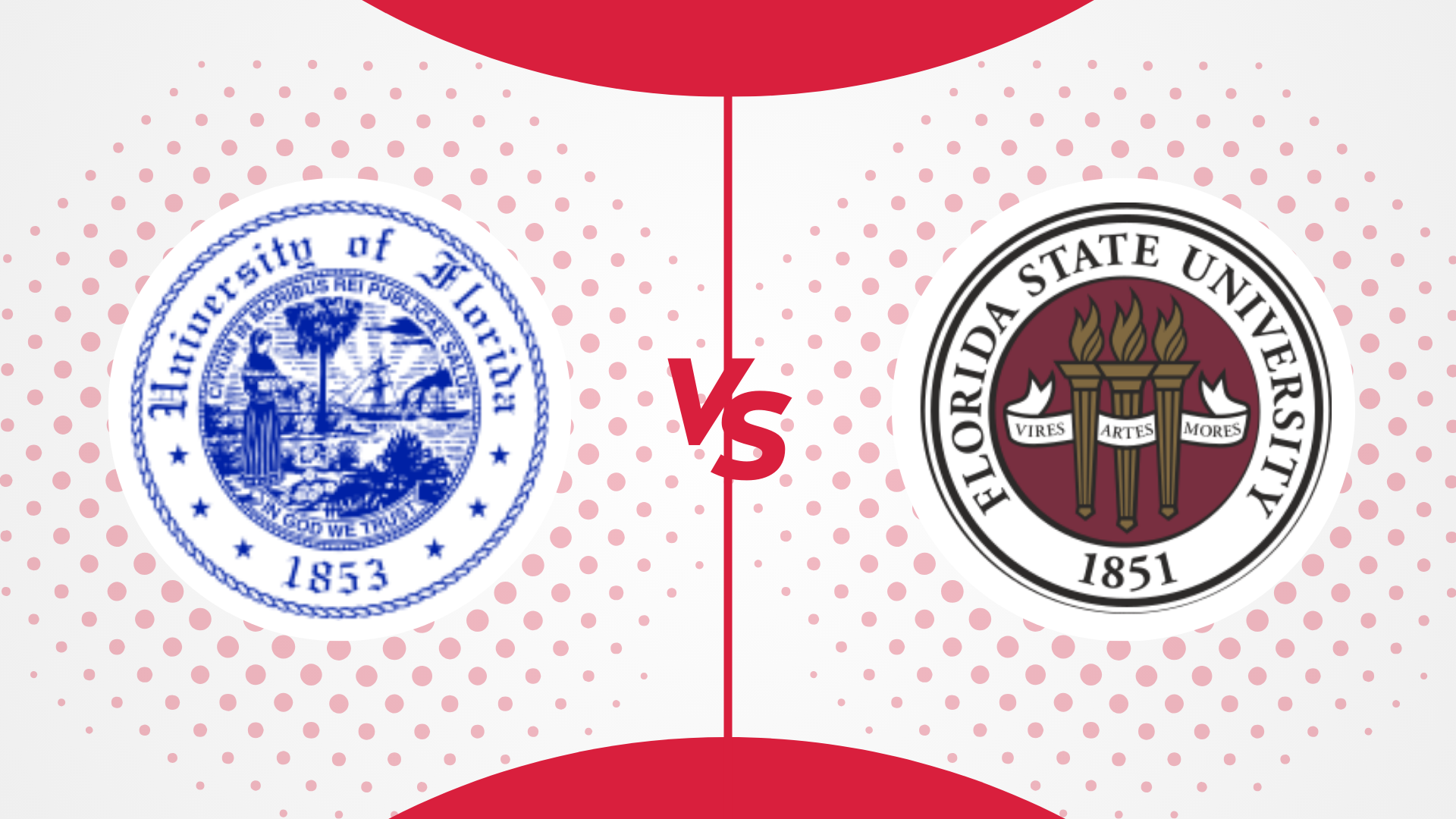
University of Florida vs Florida State University: Which One is Better For You in 2024
June 28, 2024 -

NYU vs Columbia: Which Is Better In 2024?
June 28, 2024 -

Princeton vs Columbia: Which Is Better In 2024?
June 28, 2024 -

NYU vs Cornell: Which One Is Better In 2024?
June 28, 2024 -

Boston University vs Northeastern: Which one is best in 2024
June 28, 2024 -

NYU vs UCLA: Which Is Better For You In 2024?
June 28, 2024














